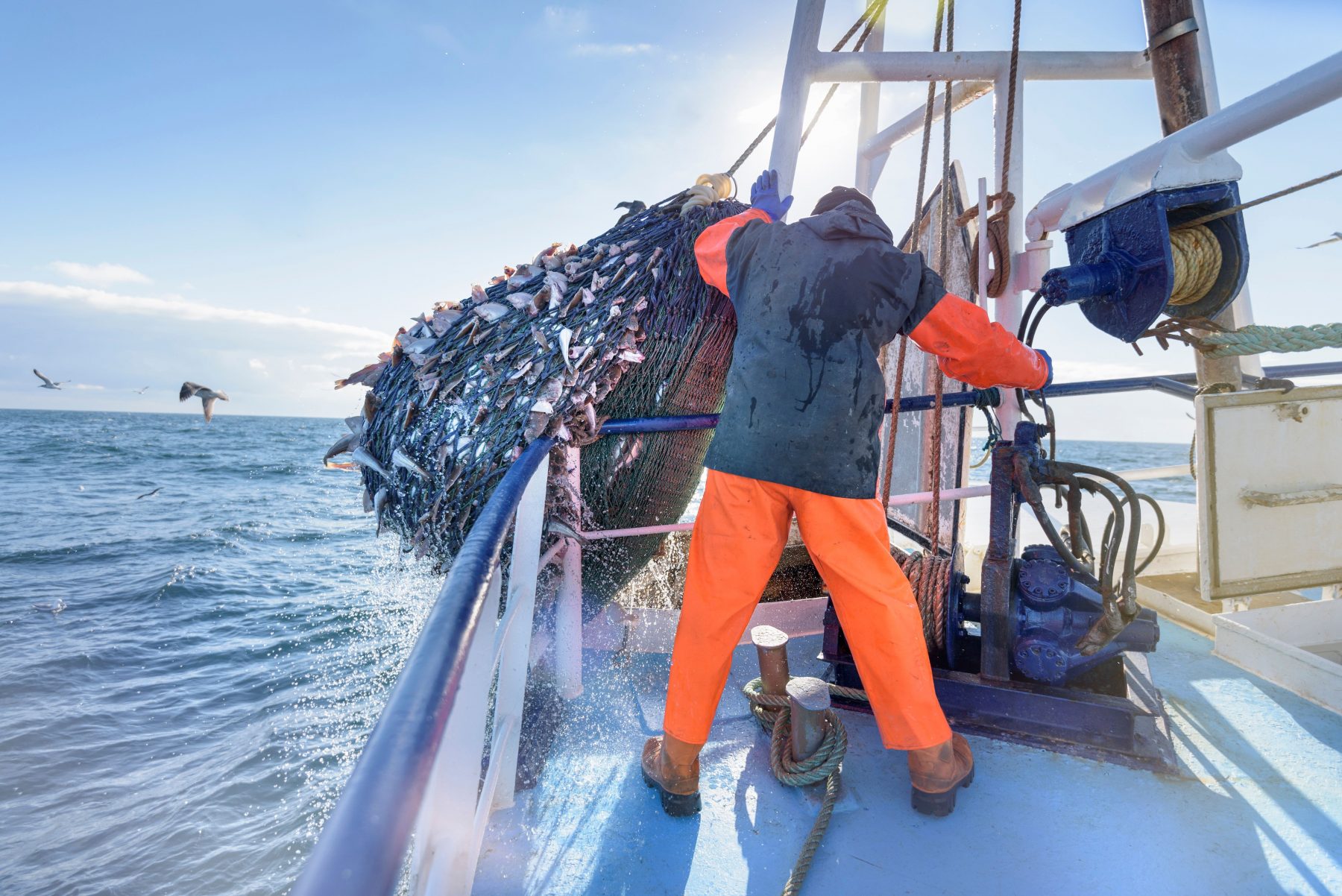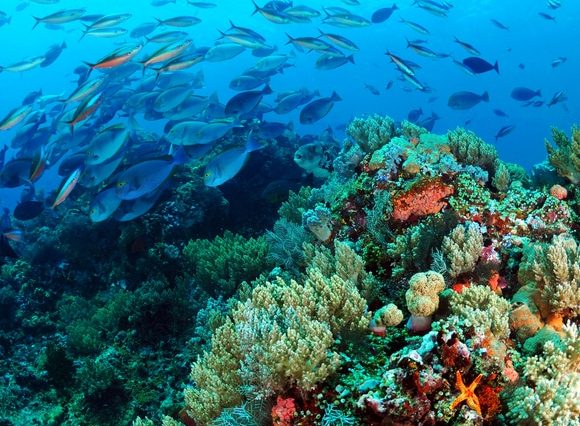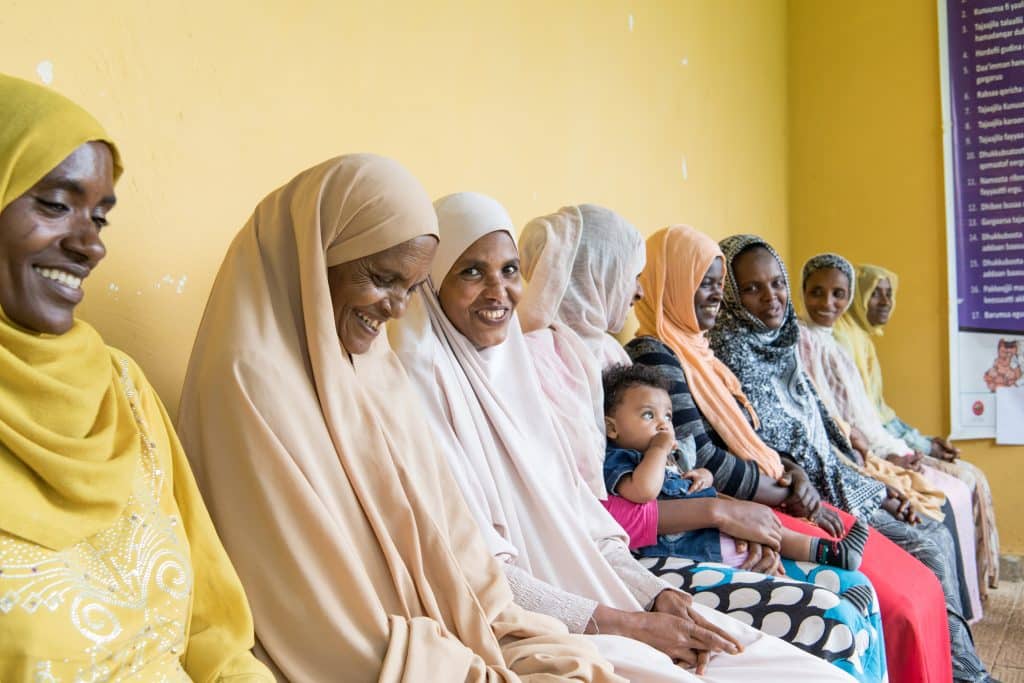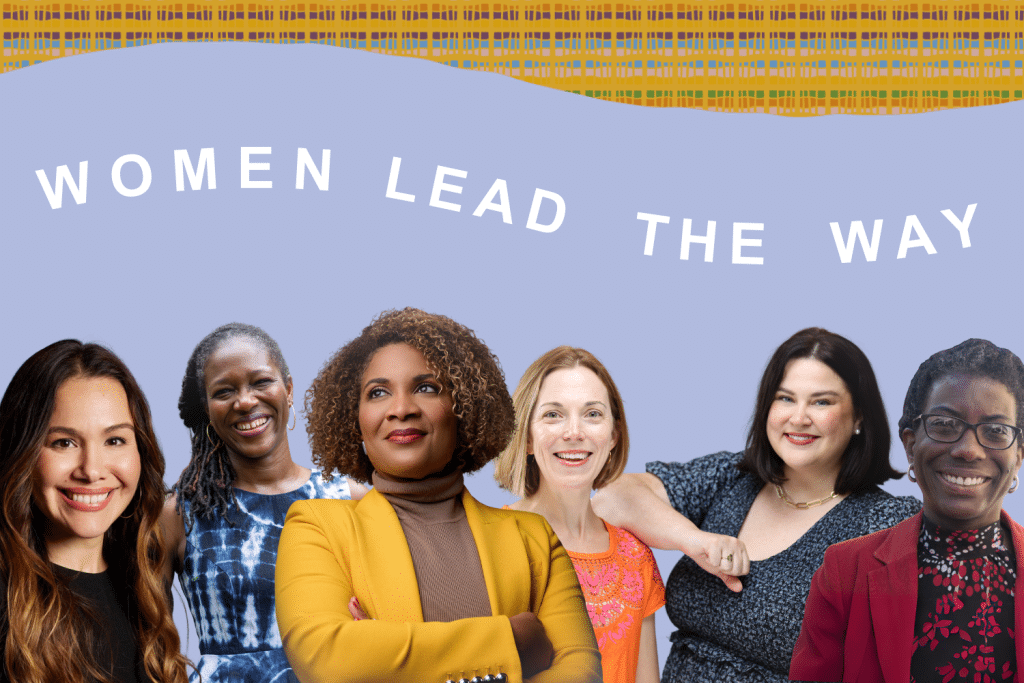As the pandemic finds people in Europe and North America cooking at home more, they are buying record amounts of seafood from grocery stores. This surge in seafood sales highlights the important role grocery stores can play in using their buying power to encourage countries that export seafood to address environmental challenges and human rights abuses.
For more than 25 years, the Packard Foundation has invested in efforts to increase both the demand for and supply of sustainable seafood around the world. Our Global Seafood Markets strategy aims to use the influence of companies in three markets – Europe, Japan, and North America – that import large amounts of seafood from countries around the world to improve the health of their fisheries and safeguard the rights of fishers and seafood workers. In 2020, the Packard Foundation and Walton Family Foundation commissioned a joint evaluation of our Global Seafood Markets strategies. We wanted to understand where our complementary strategies have delivered progress and where we should adjust our strategies to achieve greater impact.
The evaluation affirmed several areas where our grantee partners are making strong progress toward the outcomes in our strategy. More than 90% of grocery companies in North America and 85% in Northern Europe have committed publicly to sell sustainable seafood. These grocery companies have asked their suppliers for more sustainable products to meet these commitments. In turn, the suppliers have changed the seafood products they sell – and when there wasn’t enough sustainable seafood available to meet their customers’ needs, suppliers worked directly with fisheries to help them make improvements. These grocery and seafood companies are willing to take action to reduce their reputational risks – especially around human rights abuses on fishing boats or in seafood processing facilities – and in many cases have engaged in or even established collaborations with other companies to help collectively tackle challenges that may be too big or complex for any individual company to solve alone, in particular on supply chain and policy mechanisms that can address human rights abuses and IUU fishing.
These efforts have laid a strong foundation for continued progress. But, the evaluation also highlighted major barriers that must be addressed to achieve the Foundation’s goal that by 2022, 40 percent of global fisheries are sustainable or on a path to sustainability. First, while company commitments to sell sustainable seafood are now the norm, they vary greatly from business to business and few companies report publicly on their own progress toward their commitment goals. Furthermore, conservation and human rights organizations are now asking for businesses to address an expanded set of issues including social responsibility and transparency. These asks, while important, need to be better coordinated so that businesses can take action.
Second, creating widespread, lasting improvements in the health of global fisheries and the conditions for workers requires changing more than any individual company can achieve with its commitment. Governments must establish policies and regulations that protect workers and the environment, and then allocate sufficient resources to enforce these policies. Seafood companies can play a collective role in advocating for stronger policies, but the sustainable seafood movement has struggled to find efficient and effective ways of engaging companies to do this.
Third, fishers are bearing an unfair burden in the transition to sustainability. The demand for more sustainable seafood from grocery chains has catalyzed more than 185 fishery improvement projects, or FIPs, around the world. FIPs bring together companies, conservation organizations, government officials, and other stakeholders to create and implement a plan for addressing environmental challenges in a fishery so that it can make measurable progress toward sustainability over five to 10 years. In most cases, making these improvements requires money to conduct research, change fishing gear, hold educational events, and engage fishermen and policymakers in the improvement process. Evidence suggests that most of those costs are falling on fishers and local companies, rather than being shared by the entire supply chain including the companies buying the seafood in North America and Europe.
Overcoming these barriers – while also accounting for the risks posed by the coronavirus pandemic and climate change’s impact on the ocean – will be critical to our work moving forward. To succeed, conservation and human rights organizations and companies that buy and sell seafood need to work together to develop shared goals for improving the health of fisheries, ending human rights abuses, and ensuring both the health and economic well-being of fishing communities. We also need a coordinated strategy for using company influence to advocate for changes in fisheries management, human rights, and trade laws in line with our shared goals. Additionally, we will explore whether and how to engage in markets beyond North America, Europe, and Japan, such as China, to expand the demand for sustainable seafood and consequently support more fisheries to address environmental and human rights challenges. And finally, we must ensure that our strategies remedy rather than exacerbate global inequality.
Making these strategic shifts will require continued collaboration with our colleagues in the philanthropic community, as well as with civil society partners, companies that buy large amounts of seafood, and companies that produce seafood. We are eager to talk about how we can move forward together. By leveraging the purchasing power of sustainable seafood markets, we can support both fishing communities and seafood workers, while strengthening the health of fisheries and our global ocean.









